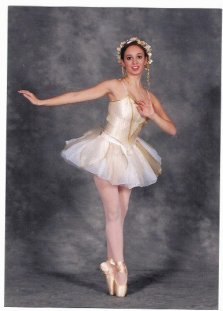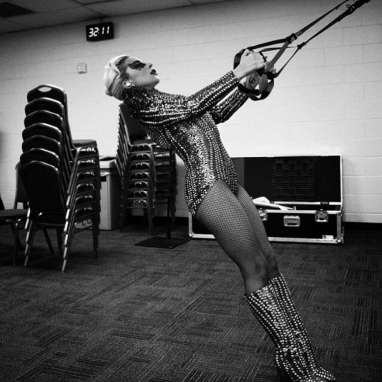For those that don’t know, I was a dancer from age 3 to 22. I was trained in classical ballet, modern, and jazz, and then danced recreationally and learned tap in college. Growing up, dance was basically my entire life. I would go to school, go straight to dance, come home, do homework, go to bed, and repeat. I spent all day in rehearsals on Saturdays, had Sundays off, and then started back up again. In the summers, I did 40 hours a week at dance camp. I had no extra time to work out or do any sort of cross training. In fact, we were DISCOURAGED from doing anything that had the potential of injuring us, including exercise. Ironically, I believe this did more harm than good in the long run! My dance career was riddled with injuries, the most serious ones being in my back and right knee.

Luckily, times are changing and research has shown that supplemental exercise is safe and extremely beneficial for dancers. More and more dancers are hitting the gym and seeing a positive change in their performance, endurance, and overall strength. I released an article last year about strength training for dancers and why it’s important. You can read that here!
TRX is a great tool for anyone, but especially for dancers. Already, notable dance schools across the US have started implementing TRX classes for their students. Even though it doesn’t seem like it, the TRX is a strength training tool-you’re just using your bodyweight instead of actual weights! Dancers tend to be prone to stress-related injuries, and the TRX allows them to cross-train without the risk of stress-related injuries. The TRX can help strengthen the entire body, and can also help to identify muscle imbalances. Since you work with your own bodyweight, there is less of a chance of overdoing it and getting injured.

With the TRX, dancers can increase strength in the core, glutes, and toe flexor muscles (essential for pointe work). A lot of the exercises beneficial for dancers take them off-balance, resulting in the need to stabilize using their core, glutes, and feet. Dancers should train TRX barefoot or in socks, to really ignite the muscles of the feet.
There are four main movements that dancers should focus on when using the TRX:
- Squat
- Plank
- Lunge
- Push/Pull
Some examples of TRX exercises for each movement are:
- Sumo squat, regular squat, single-leg squat, squat jump, single-leg squat jump, squat w/ heel raise
- Rollouts, back extensions, side plank, prone plank, bodysaw, single-leg prone plank, single-arm prone plank, side plank w/ raised leg, side plank hip drops, reverse plank, pike, knee tucks, mountain climbers
- Forward lunge, forward lunge w/ hop, lateral lunge, lateral lunge w/ hop, curtsy lunge, lateral lunge to curtsy lunge, balance lunge, lunge w/ pulse, lunge into sumo squat
- Chest press, push-up, tricep extension, back extension, windmill, low row, single-arm row, T-row, I-Y-T, fly, reverse fly, hinge row, pull-up, swan
You’ll notice that a lot of these exercises are either single-arm, single-leg, or have a core element to them as well. You want to focus on weight transfer and balance control. These exercises also blend the frontal/transverse and sagittal planes-feet turned out vs. feet parallel. Dancers need to be strong in both planes!

Here’s an example workout (video https://www.facebook.com/plugins/video.php?href=https%3A%2F%2Fwww.facebook.com%2FCMGHealthFitness%2Fvideos%2F1022150797884617%2F&show_text=0&width=560” target=”_blank” rel=”noopener noreferrer”>here):
TRX Sumo Squat
TRX Lateral Lunge to Curtsy Lunge
TRX Windmill
TRX Back Extension
TRX Bodysaw
TRX Swan
For this workout, you would do each exercise for 30 seconds before moving on to the next one, making sure to do 30 seconds on each side for the lateral lunge to curtsy and windmill. You don’t need to choose a ton of exercises to put in a circuit-6-8 is good to start out with! Or do a few small circuits of 4-5 exercises with rest in between.
Obviously, you don’t have to be a dancer to benefit from these exercises! Everyone could use a little extra work in these areas. If you ARE a dancer, see if your local gym has TRX straps or a TRX class. Remember, any TRX class in a gym won’t necessarily be specific to dancers, but would still be beneficial.
Dancers-it’s time to Make Your Body Your Machine! Try adding some TRX workouts once or twice a week and see the benefits for yourself!


1 thought on “TRX Training for Dancers”